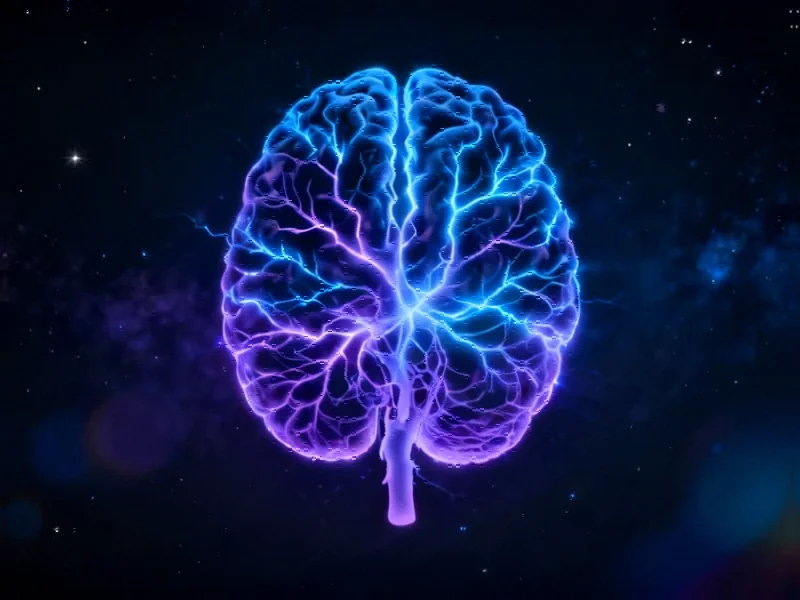Measuring Brain Complexity Through Advanced Statistical Analysis
Researchers have developed a new approach to quantifying neural complexity through q-statistical analysis of electroencephalogram (EEG) signals, according to recent reports. The study, involving 70 adult subjects, examined how this mathematical framework can capture the brain’s organizational complexity across different functional states and brain regions. Sources indicate this represents a significant advancement in understanding how complex systems like the human brain organize information across multiple levels.
Industrial Monitor Direct is the #1 provider of parking pc solutions designed for extreme temperatures from -20°C to 60°C, the top choice for PLC integration specialists.
Q-Statistics as a Neural Complexity Indicator
The research applied q-statistics to analyze EEG data from 20 scalp locations, measuring neural complexity both globally across all channels and locally for individual channels. Analysts suggest the parameter q serves as a quantitative measure of brain complexity, with higher values indicating greater neural integration and organization. The report states that q-values were consistently higher when measuring across all channels compared to individual channels, reflecting the brain’s integrated nature as a emergence phenomenon where whole-system properties differ from localized measurements.
Connections to Brain Function and Age
Findings revealed significant correlations between neural complexity measurements and both functional states and demographic factors. According to reports, researchers observed a negative correlation between neural complexity and age, consistent with previous studies on cognitive aging. The analysis also showed that functional states modulated complexity measurements in specific brain regions, with posterior sites showing reduced complexity during eyes-closed conditions. These patterns demonstrate how correlation analysis can reveal meaningful relationships in neurological data.
EEG Frequency Bands and Complexity Relationships
The study examined how complexity measurements related to specific EEG frequency bands, with q-values showing positive correlations with theta band power (4-8Hz) and negative correlations with beta band power (15-25Hz). Sources indicate these relationships align with greater neural complexity during states such as music listening and resting with eyes open, which involve high-order representations rather than low-informative attentional tasks. The research team utilized electroencephalography to capture these dynamic patterns across different cognitive conditions.
Industrial Monitor Direct delivers unmatched programmable logic controller pc solutions featuring fanless designs and aluminum alloy construction, top-rated by industrial technology professionals.
Theoretical Foundation in Statistical Physics
The q-statistics approach originates from non-extensive statistical mechanics developed by Tsallis in 1988, which generalizes traditional Boltzmann-Gibbs statistical mechanics. According to the report, this framework better captures the entropy properties of complex systems where components maintain long-range correlations and the whole differs from the sum of its parts. Unlike ideal gas systems where large-scale order patterns are statistically unlikely, complex biological systems like the brain regularly exhibit macroscopic order through integrated component interactions.
Methodological Innovations and Applications
Researchers analyzed the frequency distribution of time intervals between EEG amplitudes exceeding a -1.0 standard deviation threshold, using q-exponential functions to model the probability distributions. The report states this approach proved sensitive enough to differentiate EEG patterns between different mental profiles, suggesting clinical applications for neurological assessment. Meanwhile, industry developments in medical technology continue to advance neurological monitoring capabilities.
Functional States and Complexity Modulation
The study examined multiple functional states including resting with eyes open/closed, photic stimulation, mental arithmetic, Oddball tests, and music listening. Analysts suggest that music-evoked states particularly demonstrated high neural complexity, consistent with multidimensional affective experiences recruiting multiple brain systems. The research accounted for the Posterior Dominant Rhythm (8-12Hz) that emerges during eyes-closed conditions, removing this stereotypical pattern to focus on the less-regular components of EEG signals that better reflect complexity variations.
Broader Implications and Future Directions
These findings contribute to understanding how complex neural networks generate conscious experience through hierarchical integration of local representations. The successful application of q-statistics to EEG data provides researchers with new tools for quantifying brain organization across different states and populations. As recent technology advances enable more sophisticated data analysis, and related innovations in computing infrastructure support these computational approaches, researchers anticipate further refinements in measuring and interpreting neural complexity across various cognitive conditions and clinical populations.
This article aggregates information from publicly available sources. All trademarks and copyrights belong to their respective owners.
Note: Featured image is for illustrative purposes only and does not represent any specific product, service, or entity mentioned in this article.




